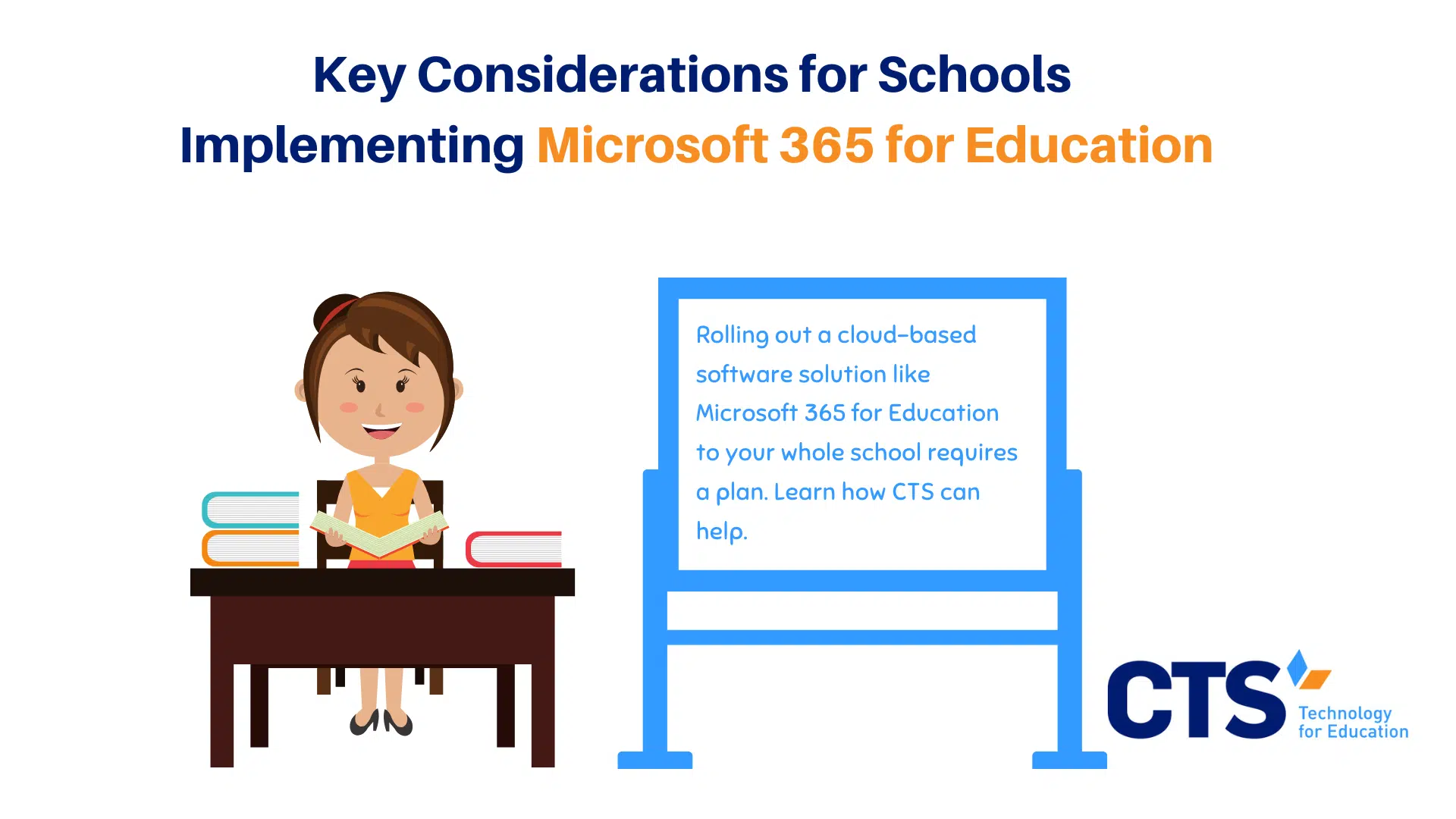Schools looking for a cloud-based software solution that is affordable, secure, and supportive of instruction are finding Microsoft 365 for Education to be a great option.
Microsoft 365 for Education is a suite of cloud-based Microsoft Office applications like Word, Excel, and PowerPoint that offer schools collaborative tools that enhance classroom instruction, student organization, and productivity. The cloud-based nature of this platform allows educators and students to access documents off-premises, making it a great tool for at-home lesson planning, homework completion, and even remote learning.
Here are three questions that schools planning to implement Microsoft 365 for Education might consider.
There are many cloud-based software solutions on the market that have tools and services dedicated to schools and districts. For example, Google Workspace for Education is another high-quality option. When choosing which option to go with, school leaders will want to consider what differentiates Microsoft 365 for Education from the other platforms. They will also want to decide whether those differentiators best serve their school’s unique mission.
To support their decision-making, school leaders can ask the following questions:
- How much will this option cost? Microsoft 365 for Education can be very affordable! In fact, there is a free option that is available to schools. This version gives schools access to web-based applications for Outlook, Word, Powerpoint, OneNote, Teams, etc. The next pricing tier, at $2.50 per month per user, grants schools access to desktop versions of the applications. Each user is allowed to have the apps on multiple devices. This version also includes access to a device management tool. A school with 500 students and 45 staff members is looking at an annual total of about $16,500 on this plan. An upgrade to a plan that costs $6 per month per user (up to about $40,o00 per year for a school with 500 students and 45 staff members) gives schools greater security management and more compliance and analytic features. Some of these enhanced security offerings include security awareness video training for staff and AI and automation tools to detect and protect from malware and phishing. Fulton County Schools, a district right outside of Atlanta, Georgia, successfully used Microsoft’s advanced security features as part of its overall mitigation plan to address prevalent cybersecurity risks.
- What is the right approach to training staff and students on this software? User training is a critical part of any implementation plan. Fortunately, Microsoft 365 for schools provides a variety of free resources, from video training to best practice templates that help students and educators get the most out of the apps. They also provide educator-specific training that includes specialty modules like guidance on how to create assessments in Microsoft Forms. Additionally, schools will often offer in-house training and professional development to teachers to ensure that consistency and a school-wide approach.
- What is the process for implementing this software across a school? School-wide implementation of Microsoft 365 for Education is a multi-step process that requires careful planning. Creating an Office 365 tenant account, configuring the environment, synching the platform with the Student Information System, enrolling devices, configuring admin settings, and installing apps are a few of the necessary steps. Microsoft provides a free online guide for IT administrators looking to move their platform to the cloud, but this guide does not capture all of the steps needed for large-scale projects or complex deployments. Given the limitations of this guidance, working with a managed IT services provider might be a good solution for schools preparing for implementation.
At CTS, we support clients as they select the software solutions that best serve their unique mission.
Technology options for schools are abundant in the marketplace. To select the best option to meet their school’s needs, school leaders can find themselves in a time-intensive research process. While there are many aspects of work in schools that cannot be outsourced, there are several opportunities to engage external support while sparing internal capacity. Researching tech options, sourcing, and procurement are on the list of tasks that can be successfully outsourced. At CTS, we pride ourselves in our ability to provide managed IT services to schools so leaders can focus on their unique mission. Our team has worked with more than 60 schools across the United States supporting them to make the most impactful technology decisions.
There are many quality tech offerings that provide affordable and secure cloud-based software solutions to schools, school networks, and districts — Microsoft 365 for Education is just one of them. If the Microsoft 365 platform is the best option for your school because of cost, user training, or quality and selection of applications, we are here to operationalize that decision.
Comprised of educational technology veterans and former school operations leaders, our team has the technical know-how and on-the-ground experience to support schools as they make critical decisions about their technology. Contact us today to learn more about our managed IT services and how CTS can partner with your school to tackle your team’s technology challenges.




